Dead Weight Pressure Gauge Calibrator
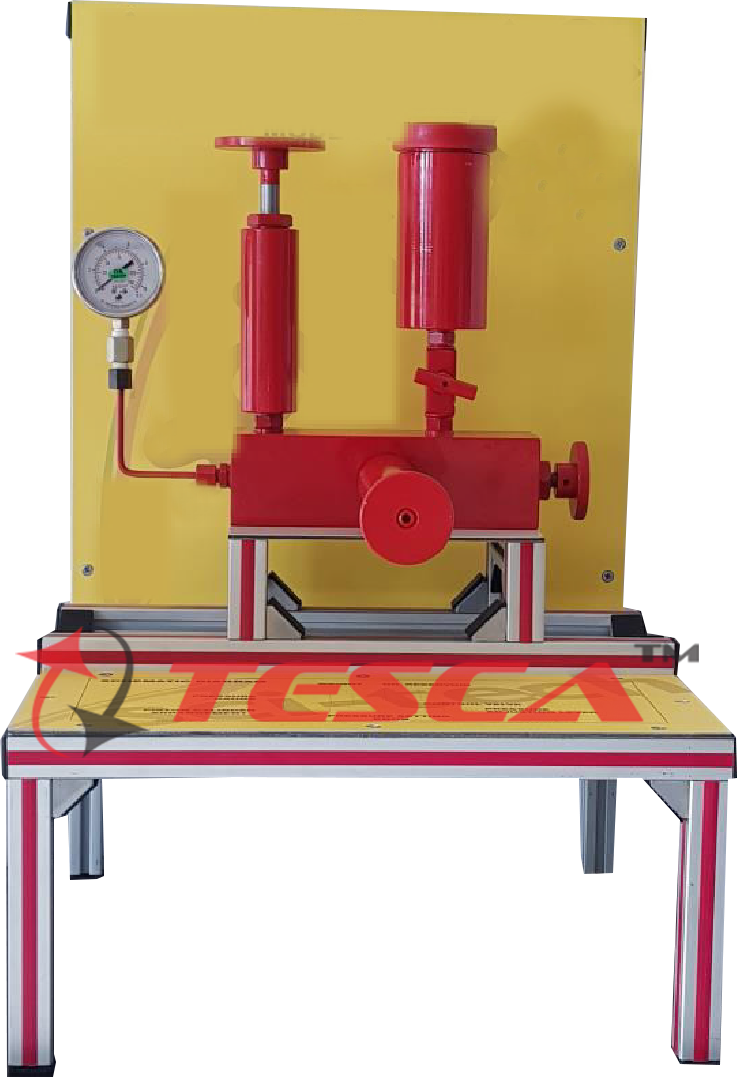
Order Code: 32056
Category: Fluid Mechanics Lab
Features: Includes simple Dead-weight Pressure Calibrator for Bourdon gauge. The operating mechanism of the Bourdon gauge visible through a clear scale. The electrical sensor can be logged using a PC with teaching software Pressure measur...
SPECIFICATION
Features:
Includes simple Dead-weight Pressure Calibrator for Bourdon gauge.
The operating mechanism of the Bourdon gauge visible through a clear scale.
The electrical sensor can be logged using a PC with teaching software
Pressure measurement is important in any branch of Science and Engineering. Bourdon tube pressure gauges are extensively used in the industry. Proper calibration of these gauges is essential to make accurate pressure measurements. Calibration using dead weights is a direct method commonly used for industrial Bourdon tube pressure gauges. Tesca Pressure Gauge Calibrator 32011 is important equipment necessary for any Fluid Mechanics and Hydraulics Laboratory of an educational
institution.
Tesca Dead Weight Pressure Gauge Calibrator is a benchtop dead weight pressure gauge calibrator that consists of a precision-machined piston and cylinder assembly mounted on leveling screws. A Bourdon gauge is supplied for calibration. The weights supplied are added to the upper end of the piston rod which is rotated to minimize friction effects. The gauge is thus subject to known pressures which may be compared with the gauge readings and an error curve drawn. Detailed Operation & Maintenance Manual is provided along with the trainer.
Tesca Pressure Gauge Calibrator 32011 has been designed to demonstrate the principle of calibration using dead weights and enable students to calibrate a Bourdon tube pressure gauge of interest to the education and industry. It consists of a vertically mounted precision- machined leak-proof piston and cylinder assembly mounted on a base with leveling screws. The piston rod has an extension and a platform to place weights during calibration. A set of weights and a Bourdon tube pressure gauge are supplied with the apparat
The cylinder is connected to the gauge through a system of leak-proof valves and flexible tubing. A non-return valve is fitted at the water supply side of the cylinder. A blanking plug is provided to drain water from the apparatus. The gauge can be subjected to known pressures by placing different weights on the piston. Applied pressures can be calculated and the values compared with the readings obtained indicated on the pressure gauge scale. The Pressure Gauge Calibrator can also be used to calibrate other Bourdon-type pressure gauges with proper tubing connections.
Water can be supplied from the 32096 Hydraulic Bench or any other source. Optionally, the unit allows pressure gauges to be accurately calibrated up to 300 bar, with an accuracy of ±0.015%.
OPTION:
Computer-based learning software can be included to enable students to understand and conduct experiments, tabulate results, and plot graphs. All components are manufactured from a corrosion-resistant material.
The Pressure Gauge Calibrator is an important experimental set-up for any Fluid Mechanics and Hydraulics Laboratory of an educational institution.
Technical Specifications:
Precision machined piston and cylinder with leveling screws
Bourdon gauge with inlet and outlet valves
Set of weights
Pressure gauge: Bourdon tube range 0 to 200 KN/m2 (KPa) (Optionally 0~300 bar)
Area of Piston: 244.8 x 10-6 m2
Mass of piston: 0.5kg
Ancillary masses: 0.5kg, 1.0kg and 2.5kg
Experiment Capabilities:
Study concepts of pressure = Force/Area and pressure scales
Calibration and the use of a Dead-weight Pressure Calibrator
Options:
Software with interface & sensors
Interactive Computer Aided Instruction Software System


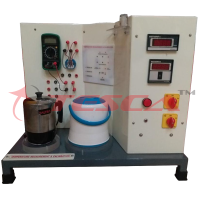
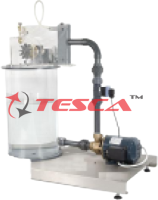
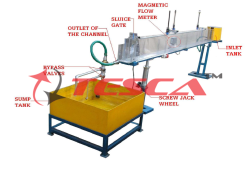
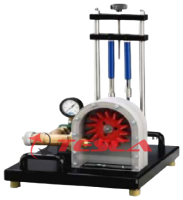
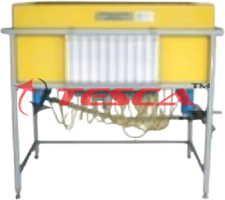
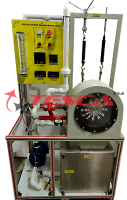
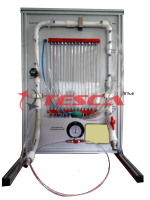

 91-9829132777
91-9829132777